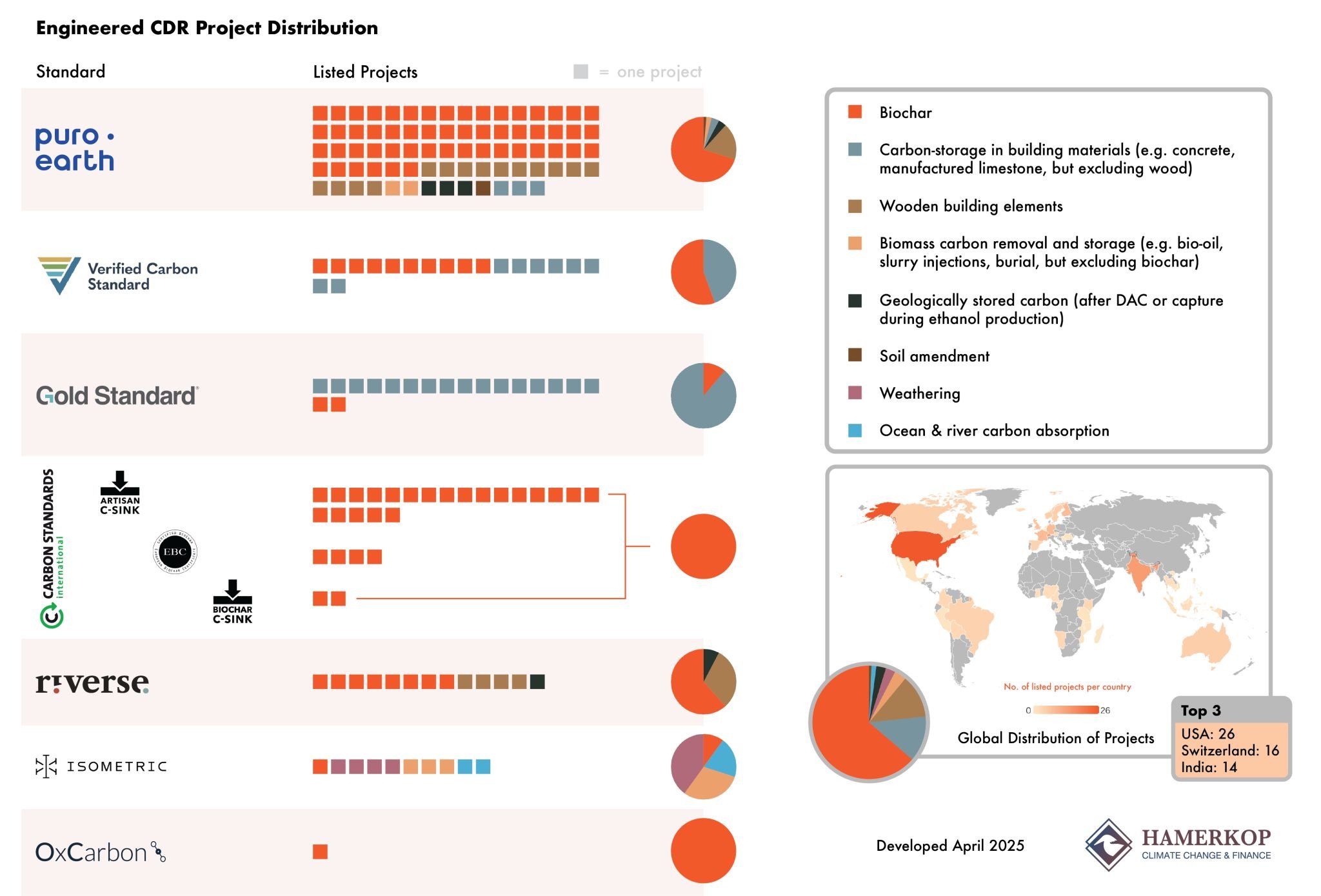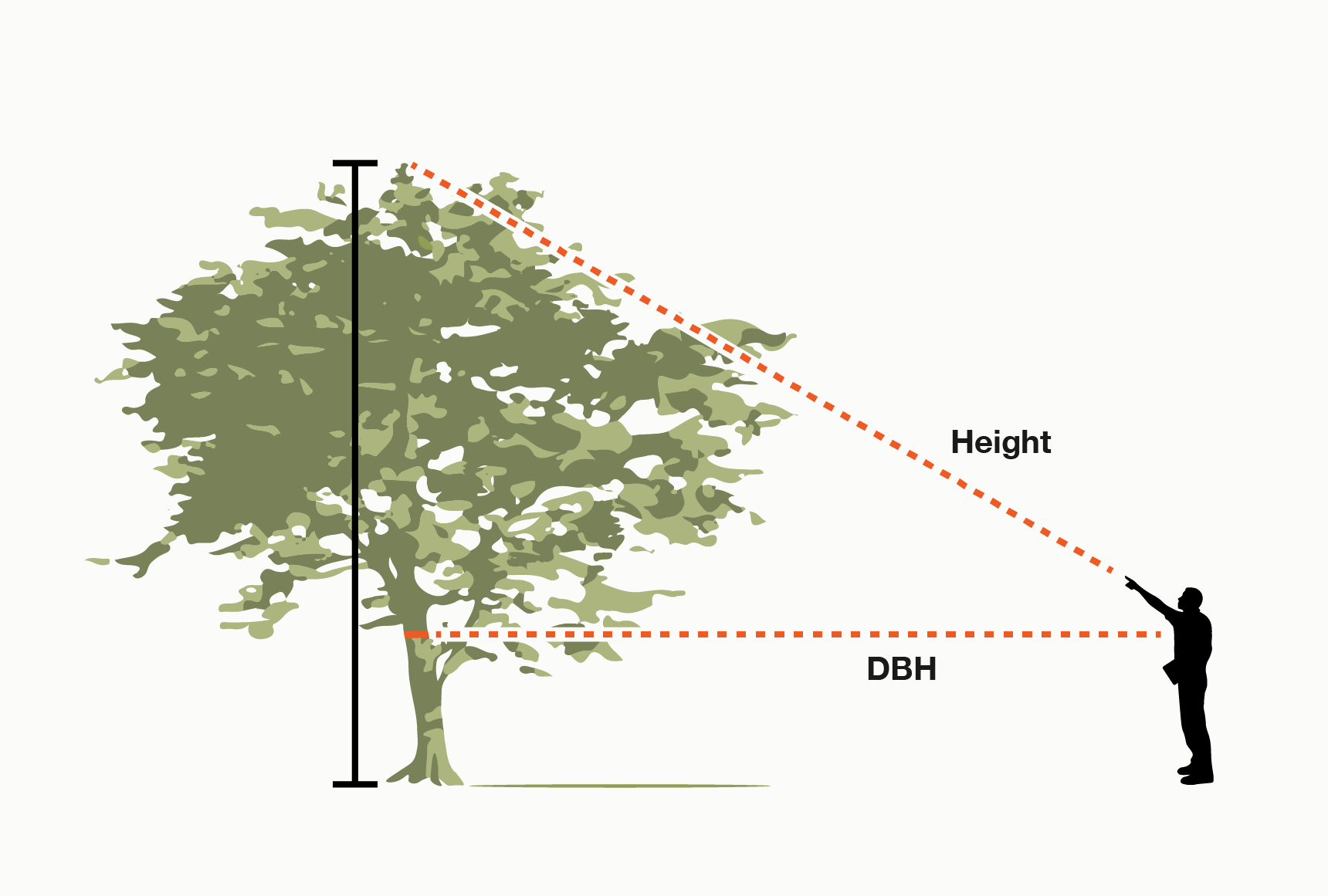Approximately 10 years ago, World Bank analysts predicted that by 2025 or 2030 regional carbon markets would merge into a large single and global market. This prediction was formulated in the context of compliance carbon markets forming up at the time in Europe, North America, Australia and elsewhere. While this has not materialised, and the compliance carbon markets are still operating at national or regional levels, the voluntary carbon market (VCM) is not growing any simpler. Although the VCM is more global, in its impact and dynamics, the increasing number of carbon certification schemes, has made it more complex.
As explained in our carbon finance handbook, the role of most carbon certification standards is to perform three fundamental functions:
Develop, approve, and update rules, principles, and requirements defining the conditions under which carbon credits can be delivered.
Review carbon offset projects against these rules, principles and requirements.
Operate a registry system that issues, transfers, and retires carbon credits.
While the VCM had been operating with approximately 6 certification schemes for nearly 15 years (from 1996 to 2010), the recent years have seen the rise of numerous competing standards.
Considering that 15 new carbon certification schemes have seen the light of day in 2023, as many as the three previous years combined, it is anticipated that the number of standards will keep growing, before eventually consolidating, as was the case with the merger of Gold Standard and CarbonFix, and to so some extent the VCS and Climate Community and Biodiversity Standard.
Below you will find a range of infographics breaking down the complexity of certification standard schemes in different ways.
Our 2025 Carbon Certification Standard Infographics:
[Feel free to download and share]
65 Carbon Certification Standards? What is going on in the carbon market?!
Over a decade ago, World Bank analysts could not have been further from the truth when they predicted that by 2025-2030 regional carbon markets would merge into a single global market…
As we highlighted with our infographics last year, the fragmentation of certification schemes shows an increasingly complex picture! After reaching out to all of the certification schemes we could find, we have updated our database to feature the 65 Certification Schemes that we know are active in the world.
The high number of standards and rapid evolution of the space can be explained by several factors:
The need for specialised schemes within sectors: offering fewer and more focused tools, methodologies, with a range of simplifications
The need for culturally adapted schemes: not everyone works in English! Domestic or regional schemes can be rendered more accessible when available in the locally spoken languages (e.g., French, Spanish, Japanese, etc.)
The need for contextually adapted schemes: domestic or geographically specialised schemes can provide a range of default and locally relevant values that simplify the certification and verification processes
The need for more sovereignty: countries believe they should have control over how carbon credits are issued for domestic projects and carbon accounted for, as well as who these credits are issued to. Countries, often want to set aside some of the best practices in exchange for cost effectiveness.
The need for less resource-intensive processes: as the leading schemes grow in complexity to accommodate their stakeholder needs for integrity, this creates rooms for less sophisticated and/or more innovative schemes
We expect the number of schemes to keep growing over the years, followed by a consolidation of the competition with the weakest throwing in the towel. This process has already begun…
Carbon Certification Standards: a global perspective on emerging domestic trends
As the carbon market matures, carbon certification standards—frameworks ensuring that carbon credits represent real, measurable, and verifiable climate benefits—are increasingly at the forefront of discussions. While global standards like Verra's VCS and Gold Standard dominate the space, national and domestic standards are gaining traction.
But what exactly are these standards?
Here’s a rough definition: national or domestic carbon certification standards are country-specific frameworks designed to guide the development, registration, and issuance of carbon credits. These schemes often reflect national priorities, regulatory contexts, and alignment with international climate agreements. They are often run by government authorities, sometimes by affiliated organisations and are available in the local language.
From the west to the east: domestic schemes are emerging as targeted competitors to global standards. Initially taking place in Western countries, it is now taking place across Asia where J-Credits and Thai-VER are pioneers, and where Korea, Mongolia, Indonesia, and Malaysia have recently (or will soon) launch their own schemes.
Why this trend is emerging: governments are seeking greater control over carbon market revenues and ensuring alignment with Nationally Determined Contributions (NDCs). They aim to reduce reliance on international schemes and have schemes that are simpler and more cost-effective for project certification. Plus, Tailored standards allow for region-specific considerations, such as language, target sectors, and the use of tailored carbon accounting estimation
Potential evolution: the next decade could see a proliferation of domestic schemes, with more countries designing standards that align with Article 6 of the Paris Agreement and that could be used for 6.2 transactions, like in Premium T-VER in Thailand and JCM in Japan
Greater regional cooperation may lead to harmonized standards across economic blocs, facilitating cross-border carbon trading while maintaining high integrity, such as the efforts spearheaded by Singapore, Malaysia, Thailand and Indonesia
Over 5.3 BILLION carbon credits issued by 50 standards… but just TWO dominate the market. Why?
Let’s dive into some fascinating trends from the last 29 years of carbon credit certification:
The Top 2 standards rule the market:
The UN Climate Change's Clean Development Mechanism (CDM, 1997) and Verra’s VCS (2007) alone account for 70% of all issued credits. CDM leads with 45%, while VCS holds a 24% share. Combined, they’ve issued more credits than all other standards put together.
Gold Standard vs. VCS: a tale of two strategies
Though both launched around the same time, VCS has surged ahead. Why? A strategy focusing on REDD+ projects, large-scale renewables, and less conservative cookstove methodologies. Meanwhile, Gold Standard opted for a more conservative approach and refused to credit REDD+.
Geographic and sectoral specialization:
Standards like the ACR at Winrock International (American Carbon Registry), Climate Action Reserve, Australia’s ERF, and China’s CCER have focused on specific regions or sectors, issuing over 100M credits each.
The rise of REDD+ and the new players:
With a focus on REDD+ projects, standards like Architecture for REDD+ Transactions (ART), BioCarbon Standard, World Bank’s FCPF, COLCX & T-VER are growing rapidly. Emerging international and cross-sectoral standards like Cercarbono and Global Carbon Council have raised their profile significantly and are getting ready to take over the VCS and the GS.
What’s next?
A surprising number of standards (14!) have yet to issue their first credits, while others are still carving out their niche. Meanwhile, new domestic standards continue to emerge every year (check out our next infographics).
The rise of the new-wave standards
A new generation of standards is gaining traction and is scaling up rapidly (e.g., Isometric, Tero Carbon, Puro.earth, Isometric, ERS - Ecosystem Restoration Standard, Riverse, etc.)
Certification standard application scopes
In the constantly evolving world of carbon certification standards it can be difficult to understand the varying scopes… So we decided to break them down for you:
Here are 66 active carbon certification standards with insight into the realms in which they operate…
We highlighted the following categories:
Land Use, Land Use Change, and Forestry (ARR incl. agroforestry, agriculture, land restoration)
Conservation & REDD+ (incl. project & jurisdictional)
Carbon Dioxide Removal (incl. engineered carbon removal, biochar)
Industrial GHG emission reduction and energy efficiency
Methane Capture (incl. waste handling and disposal)
Renewable Energy
Domestic Energy Efficiency (incl. cookstoves, efficient lighting, water access, building energy efficiency)
As you can see on the last page, “Land Use, Land Use Change and Forestry” is the dominant scope, with 25% of the overall coverage by these 66 standards. The rest of the scopes range between 10-15% of the overall coverage.
As of January 2025, here are the CORSIA-approved carbon certification standards…
Why do these standards matter? CORSIA is expected to become one the major sources of demand for carbon credits, and only a handful of eligible standards have met the (demanding) criteria… And the approval process is stringent.
Let’s back up a little bit: CORSIA = the Carbon Offsetting and Reduction Scheme for International Aviation.
CORSIA was established in 2016 by the UN’s International Civil Aviation Organization (ICAO) as a market-based mechanism to support carbon-neutral growth in the aviation industry. While participation is voluntary until 2027, flights between countries that have committed to align with CORSIA are required to comply… Meaning the airline operators that emit over 10,000 tonnes of CO2 per year must monitor, report, and purchase credits to offset some of their emissions. At this point, 126 countries have committed to the First Phase.
A month ago, the ICAO released a series of documents detailing revised eligibility and exclusion criteria for crediting programs as part of Phase 1 for CORSIA. The updated guidelines exclude project types like large-scale REDD+ credits (>7,000 per year), afforestation/reforestation, and renewable energy projects above 15 MW.
This will undoubtedly have a major impact on the VCM. As demand and competition increases for the subset of eligible projects, prices will sky-rocket, due to the limited eligible supply and the overlapping eligibility with other market segments. We are expecting this to send strong positive market signals in 2025.
The goal of all of this? Aligning with the Paris Agreement, pushing for higher integrity credits, and emphasizing integrity and transparency.
The state of (listed) engineered carbon dioxide removal projects
Carbon Dioxide Removal (CDR) is the process of capturing and storing carbon dioxide through natural interventions and/or technological processes. There are many ways to do this, and the methodologies are constantly evolving… Some of the most common types of engineered carbon removal listed on the registries included are:
the production of biochar,
carbon sequestration and long-term storage in building materials (like carbonated concrete aggregate),
biomass carbon removal and storage (e.g. bio-oil and slurry injections)
In our infographic, we broke down the categories of CDR based on the commonalities in project type across various standards and methodologies. As you can see, biochar dominates the sector. Nevertheless, more technological sequestration and storage methodologies are being developed across all registries.
Our takeaways:
CDR (including nature based and engineered) and avoidance of emissions both need to be done in tandem to limit emissions
Although nature based is generally cheaper, engineered has its own advantages such as being more readily available in the short term, being more durable, having greater scalability and featuring more location flexibility
Engineered CDR is constrained by costs, energy needs and potential land and climate impacts – relying too hard on engineered CDR could limit growth of other mitigation efforts
Biochar is the driver of the engineered carbon removals market, but other technologies are developing quickly (like DAC, ocean alkalinity, bioenergy with CCS and BECCS, enhanced weathering, ocean fertilisation)
CONCLUSION
Through this analysis, we aim to shed some light on the complex world of carbon certification standards at a time where financial sponsors and buyers of carbon credits are looking for clarity and visibility over the quality of their investments and purchases.
HAMERKOP’s experts have more than a decade of experience working with the carbon market ecosystem, including reviewing and supporting the creation of new certification standards and methodologies and supporting project developers in selecting the right standard for them and designing their climate change mitigation intervention accordingly. If you are looking for support in this space, we can help, reach out to us.
This is a highly dynamic space and if you know of a scheme that would fit on these maps, do let us know as we will update this map regularly!



















































